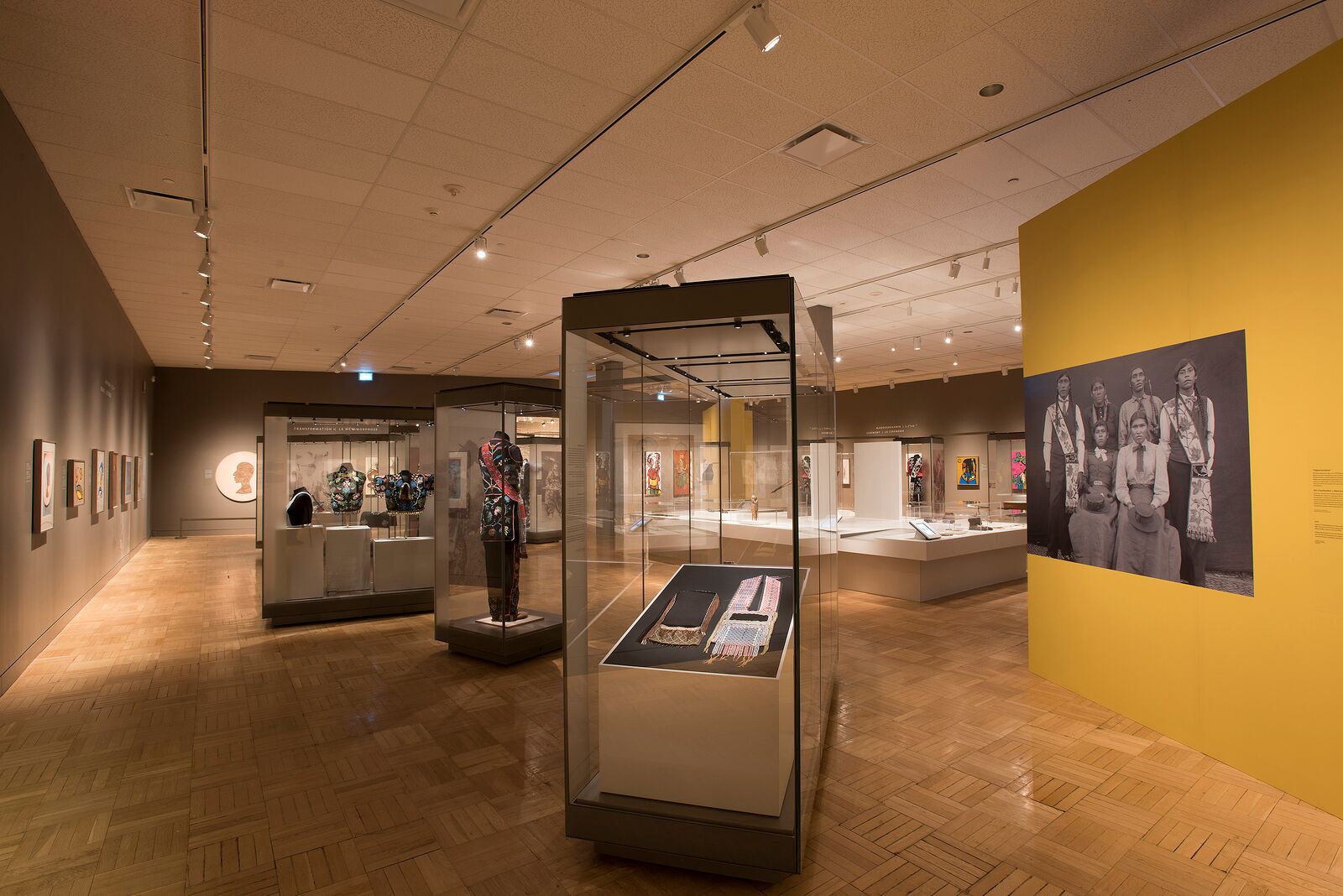Abdeali Saherwala | Staff Writer
Featured Image: Arni Brownstone, Saul Williams, and Alan Corbiere curated the exhibition to teach people about sustainability and the greatness of Anishinaabeg culture. | Courtesy of the Royal Ontario Museum
The Royal Ontario Museum (ROM) is displaying an exhibition produced by the Anishinaabeg people. These works of art reveal stories of their culture, struggles, and connections with the world. Having two entrances, this unique, free-flowing exhibition will allow visitors to experience the same message from beginning to end. It shows the Anishinaabeg people’s way of life and how it has changed due to the colonization by Europeans.
Anishinaabeg: Art & Power was created by Arni Brownstone, the ROM’s specialist on cultures of the North American Great Plains in collaboration with Saul Williams, a painter and Woodlands School of Art member from North Caribou Lake First Nation in Northern Ontario; and historian, Alan Corbiere, from M’Chigeeng First Nation on Manitoulin Island.
The collection of Anishinaabeg artwork is extensive, including several pieces of beaded clothing, painted artworks, and statues. All of the artwork is focused on the Anishinaabeg creation story, myths, and other ritualistic ideologies, which bear a message of living in complete harmony with nature, as portrayed throughout the exhibition; they reveal how all living creatures belong on this planet.
Brownstone, a York visual arts alumnus, wanted to show the interactions of the Anishinaabeg people with other Indigenous groups, and the impact that it had on their art.
“I wanted to explore when the Anishinaabeg came into contact with the Europeans and other Indigenous cultural groups and how that affected their artwork,” Brownstone explains. “Art moves with people and changes in interesting directions at points of cultural overlap.”
Saul Williams, an Indigenous art curator, wanted viewers “to learn about us and who we are as people w—we have values, laws and expectations, our culture, and language, and traditions that are still in most communities.
“We never had garbage dumps, jails, hospitals, or illnesses—until colonization.
“We used everything, recycled and lived, as nomads. The land became a sacred place for us that provided us food and shelter. Everything came from our lakes and land.”
Williams still wants the artwork to be more accessible to everyone. “I want to digitize all these pieces of artwork into a 3D virtual world or platform, so the show can travel from classroom to classroom. We need to think of ways to share something good to all nations and cultures, to promote good relationships among ourselves for a good future for our children,” he says.
Although the ROM did not approve of the curators’ authentic ideas of adding their language in their exhibition due to lack of space, it was still a tremendous success. Anishinaabeg: Art & Power conveys old stories, fables, and lessons through creativity and art.
It’s simple and magnificent, yet authentic and knowledgeable. Each story has a deep connection between man and nature, exceeding the limits of European views of the dominance of man over nature.
In our current world of environmental crisis and overconsumption of resources, this exhibition truly reveals to us the sustainable and respectful ways in which the Anishinaabeg people have lived for years.
We can all learn much from the Indigenous peoples, in the hope to make the world a better place for generations to come.


